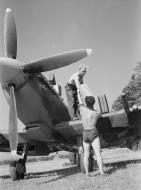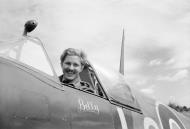RAF No 602 Squadron Spitfire photographs
Spitfire MkVb RAF 602Sqn 'City of Glasgow' LO-D S/Ldr Pierre H. Clostermann BL686 Britain 1942
Asisbiz Database: BL686 Vb CBAF M45 24MU 9-1-42 19S 25-2-42 611S 12-2-43 FAAC 27-4-43 ros 403S 26-5-43 411S 4-9-43 341S 17-10-43 453S 27-10-43 FAAC 7-11-43 ros 602S 25-1-44 FACE 7-3-44 57OTU 7-12-44 u/c leg collapsed while taxying Eshott FAAC 27-2-45 SOC CE 12-3-45
Spitfire RAF 602Sq LO-H 01
Photo 01: Spitfire MkVb RAF 602 (City of Glasgow) Squadron LO-H K9899 Britain 1940.
MkIX FF 13-2-43 402S 18-2-43 416S 23-3-43 Station HQ Kenley 4-4-43 AST mods 416S 16-4-43 421S 27-7-43 AST 26-8-43 CAC ops 24-9-43 AST 83GSU 23-3-44 Scottish Aviation 22-8-44 9MU 9-1-45 80OTU 24-5-45 29MU 21-3-46 sold scrap H.Bath 10-11-49 W/C Johnson shot down 16 of his final total of 34 enemy aircraft in this aircraft
Spitfire MkIX RAF 602Sqn LO-D Johnson EN398 England 1943
Asisbiz Database: EN398 IX 3989 CHA M63 FF 13-2-43 402S 18-2-43 416S 23-3-43 Station HQ Kenley 4-4-43 AST mods 416S 16-4-43 421S 27-7-43 AST 26-8-43 CAC ops 24-9-43 AST 83GSU 23-3-44 Scottish Aviation 22-8-44 9MU 9-1-45 80OTU 24-5-45 29MU 21-3-46 sold scrap H.Bath 10-11-49 W/C Johnson shot down 16 of his final total of 34 enemy aircraft in this aircraft
Spitfire MkIX RAF 602Sqn LO-D Pierre Clostermann MH526 England 1943
Asisbiz Database: 39MU 21-8-43 405ARF 22-9-43 602Sqn 6-10-43 Scottish Aviation 3-10-44 MedAAF 30-4-45 to ItalianAF 26-6-47 as MM4037
Spitfire MkI RAF 602Sqn at Drem Scotland Mar 1940 IWM HU106304
The pilot waits in his cockpit as armourers work on the machine guns of a Spitfire Mk I of No. 602 Squadron at Drem in Scotland, March 1940.
Imperial War Museum IWM HU 106304 https://www.iwm.org.uk/collections/item/object/205234202
Spitfire MkIX RAF 602Sqn Betty Sqn Ldr JJ Le Roux C0 at B11 Longues Normandy IWM CL 784
Squadron Leader J J Le Roux, Commanding Officer of No 602 Squadron RAF in the cockpit of his Supermarine Spitfire Mark IX, "Betty", at B11/Longues, Normandy. Le Roux, a South African, joined No. 73 Squadron RAF in France in 1940. He was shot down twelve times, but enjoyed better luck with No. 91 Squadron in 1941 and 1942, shooting down eight enemy aircraft before joining No. 111 Squadron RAF in North Africa. He ended his second tour in command of the Squadron. Following a rest from operations he was given command of No. 602 Squadron in July 1944. Le Roux is generally credited as the pilot who attacked and badly wounded Generalfeldmarschall Erwin Rommel in his staff car on the road between Livarot and Vimoutiers on 17 July 1944, the day on which he also destroyed two Messerschmitt Bf 109s and damaged two more to bring his victory score to 23.5. On 29 August 1944, Le Roux took off in bad weather to collect some beer for his Squadron from England, but was lost en route.
Imperial War Museum IWM CL 784 https://www.iwm.org.uk/collections/item/object/205207778
Spitfire MkIXb RAF 602Sqn Pierre Closterman (L) KL Charney at B11 Longues Normandy IWM CL552
Sous-Lieutenant Pierre Closterman (left) congratulates Flight Lieutenant K L Charney in the cockpit of his Supermarine Spitfire Mark IXB, on their return to B11/Longues, Normandy, after an evening sortie in which they each shot down a Focke Wulf Fw 190. Both pilots were serving with No. 602 Squadron RAF.
Imperial War Museum IWM CL 552 https://www.iwm.org.uk/collections/item/object/205211610
Spitfire MkIXb RAF 602Sqn LOP MH809 at Ford Sussex IWM CH12890
Supermarine Spitfire Mark IXB, MH809 'LO-P' of No. 602 Squadron RAF is guided out from its dispersal at Ford, Sussex, for a fighter sweep over occupied Europe.
Imperial War Museum IWM CH 12890 https://www.iwm.org.uk/collections/item/object/205212042
Heinkel He 111P2 1.(F)ObdL WNr 1594 sd by RAF 602Sqn at nr St Abbs Head Berwickshire 22nd Feb 1940 IWM HU 72686
The burning wreckage of Heinkel He 111P-2 WNr. 1594 of the reconnaissance unit 1.(F)ObdL), brought down at East Coldingham near St Abbs Head, Berwickshire at 12.30pm on 22 February 1940. The aircraft was intercepted by Squadron Leader A D Farquhar and Pilot Officer G V Proudman of No. 602 Squadron. Proudman was flying a cannon-armed Spitfire Mk I (Serial L1007). The Heinkel was subsequently destroyed by its crew. The crew of four were all captured, one of them wounded.
Imperial War Museum IWM HU 72686 https://www.iwm.org.uk/collections/item/object/205075692
- IL-2 Sturmovik Cliffs of Dover - COD/CLOD skins
- No Game skins for this group at the moment
Please go to the Official 1C Company forum http://forum.1cpublishing.eu/
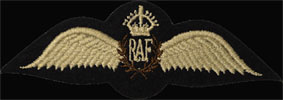
Pierre Clostermann
Pierre Clostermann, the leading French ace in World War II, left home in 1941 at the age of 19 to join the Free French Air Force in Britain. In January 1943, he was assigned as a sergeant pilot flying the Supermarine Spitfire Mk IX fighter with the newly formed No. 341 "Alsace" Squadron at RAF Biggen Hill. He achieved his first air victories in late July by destroying two Focke-Wulf 190s over France. Later that year, he gained a commission and was posted to fly with the Royal Air Force. By July 1944, he had accumulated more than 300 combat missions, including fighter sweeps, bomber escorts, and ground attack sorties against airfields and V-1 rocket sites in Normandy. After a brief rest from combat, Clostermann returned to action and flew the Hawker Typhoon and new Tempest Mk V fighters.
As a 23 year old flight commander assigned to various RAF squadrons in France and Holland, he often led large numbers of aircraft on fighter sweeps and armed reconnaissance missions. He flew 420 combat sorties during World War II and achieved 32 aerial victories, most of them in engagements with fighters. He again saw combat in 1956 as a Reserve officer in command of an F-84G squadron in the Suez war. As a civilian, he served eight terms as a member of the French Parliament (National Assembly). He is also the author of several books, including his classic wartime autobiography, The Big Show. Clostermann later became a Senior Vice President of Cessna Aircraft Company and a member of the Board of Trustees of the International Game Fish Association. His numerous decorations include the Grand Officer of the Legion d'Honneur and the Cross de Liberation, France's highest awards for service and gallantry.
Web References: http://www.au.af.mil/au/goe/eagle_bios/1983/clostermann_1983.asp

James Edgar "Johnnie" Johnson
RAF A.V.M. - CB, CBE, DSO & 2 Bars, DFC & Bar,
Order of Leopold & Croix de Guerre (Belgian)
Legion of Merit, DFC & Air Medal (U.S.)
Legion d'Honneur (France)R.C.A.F. BLASTS ESSEN PLANTS, DOWN JERRIES
Toronto Fliers Win Many Dogfights While Bombers on Way HomeLondon, April 4, 1943 - (AP) - Tons of explosives dropped by Canadian airmen blasted the mammoth Krupp armament works Saturday night as the R.A.F. and R.C.A.F. proceeded methodically with their plan to wipe out the factories which cover hundreds of acres around Essen and supply the Axis with much vital equipment.
Forming a part of the large force attacking the great German industrial city were three R.C.A.F. Halifax squadrons as well as scores of Canadians in the R.A.F. who fly in such giants as Lancasters. Of 21 bombers lost, five were from the Canadian bomber group.
Saturday night's action by the R.C.A.F, followed afternoon sweeps over Nazi-held France in which a Canadian Spitfire wing destroyed five German fighters and damaged and probably destroyed others. The action, one of the most successful in weeks for the R.C.A.F. pilots, came when the wing supported fighter-bombers on an attack on Abbeville, on the French coast. One Spitfire was lost.
The Canadian squadrons on the Essen raid were led by Wing Commanders W. D. Ferris of Edmonton, A. C. P. Clayton, Vancouver, and M. M. Flemming, Ottawa. Antiaircraft fire and searchlights were plentiful, but only a few Canadians reported sighting night fighters.
Confident that further extensive damage was inflicted in the 54th raid on Essen, the Canadian airmen told of one particularly large explosion, concentrated fires extending over a large area and dense columns of smoke.
Sgt. A. S. Sutton of 176 Erskine Ave., Toronto, reported a tremendous blast in the heart of the target area and Sgt. T. W. Dimma of Ottawa added facetiously that "I expect Krupps have a lot of stuff that might go off."
"There were two smaller explosions and then right beside them a big one," Sutton said. "Flame poured up and then mushroomed and stayed there in an orange blaze for at least 10 seconds."
Sgt. B. D. Kirkham of Saltcoats, Sask., reported smoke poured up in such great, thick clouds that the fires were blotted out. Twenty-five miles from the target all he could see was the reflected glow.
Pieces of flak glanced off the shoulders of PO. Arnold Rollings of Allenford, Ont., a veteran Canadian bushpilot who was navigator of a Lancaster. Rollings was unhurt.
A motor of the big aircraft cutout over the target and the English pilot dived 11,000 feet toward the searchlights while gunners poured bullets at the lights. Eight flicked out as the bomber swooped to within 400 yards of the ground.
Sgt. Duncan McMillan of Landis, Sask., was a mighty tired airman when he reached base. The elevator trimmers of his aircraft froze en route to Essen and it was a great physical effort to control the bomber. However, it went on to bomb the target although it was unable to weave as searchlights scoured the sky.
Flt. Sgt. Johnny Carrere of Cochrane, celebrated his commissioning – word of which reached him just before the take-off – by bombing Essen.
Other Canadians on the raid included Sgt. C. E. Willis, Peterborough, Ont., and Ken Emmons, Elgin, Ont., whose wife lives at 244 Rushholme Road, Toronto. Also in the big attack were Flt. Sgt. Harold Huether of Kitchener, PO. Bill Hilton, Brantford, and Ross Webb of Glenavon, Sask.
In Saturday afternoon's impressive sweep by the Canadian fighters, four Canadians and their English wing commander each shot down a Focke-Wulf 190, a Toronto sharpshooter damaged another and two British Columbia youths shared a probable. The five pilots who each added a Nazi plane to his total were Sqdn. Ldr. S. L. Ford, D.F.C. and Bar, of Liverpool, N.S.; Flt. Lt. C. M. Magwood of 414 Dovercourt Road, Toronto; FO. H. D. MacDonald of 30 Craydon Avenue, Toronto; Sqdn. Ldr. S. H. Boulton of Coleman, Alta., and Wing Cmdr. J. E. Johnson, D.F.C. and Bar, an Englishman.
FO. J. A. Rae of Toronto damaged one and Flt. Lt. R. A. Buckham of Vancouver and FO. N. A. Keene of White Rock, B.C., shared a probable. Keene was last in the news when he scored hits on a German fighter over France Feb 16.
Johnson said the wing pounced on about 20 enemy fighters which came up after bombs had been dropped on objectives at AbbevilleJerries Fell in Pieces
"They were about 3,000 feet below us and I think we took them by surprise," he said. "There were a good many combats at about 24,000 feet."
Magwood's victory was the most spectacular. His victim blew up in the air.
"I started firing at about 150 yards," Magwood said. "The blast lifted my kite with quite a bump."
Ford said his victim turned over when shells and bullets struck then went into a dive with smoke pouring out. Several other squadron pilots reported seeing it in flames at a low level.
MacDonald roared in with guns blazing and saw a wheel of a FW-190 come down, then the cockpit cover blew off and the Nazi pilot bail out.
Boulton attacked a fighter from underneath and observed strikes that blew off pieces from the enemy aircraft.
"The bullets seemed to go into the body of the plane and then I should think into the cockpit and the engine because he started to give out smoke," Boulton said. "Then the enemy machine tipped forward on its nose and went straight down." Both firing, Keene and Buckham attacked their victim from the rear. "We could see chunks flying from the hood and side of the cockpit and he started to go down with smoke coming out," Keene said.Rae poured a long burst into an enemy fighter from an angle and observed many hits, but "there was another Hun circling, so I did not stop to see what happened."
Canadian Fliers Slam Germans at Week-End
London, June 27, 1943 - (CP) - Royal Canadian Air Force pilots shot down four enemy aircraft during the week-end, attacked enemy airfields, laid mines in enemy waters and blasted a train in enemy-occupied territory, it was disclosed tonight.
Two of the enemy aircraft went to S/L Charles Cecil Moran, 28, of Trenton, Ont., and one to W/C J. E. Johnson, an Englishman serving with the R.C.A.F. Johnson raised his score to 19 in a conflict near St. Omer, France. Two pilots shared in destruction of the fourth.
Moran, commander of an Intruder squadron of the Fighter Command, finished off his two planes over an airfield south of Paris on Saturday night.
Johnson and his wing were flying to Northern France when they spotted 36 enemy fighters and tried to engage them, but the Germans scurried away.
The Canadians jumped six others coming from the west. Johnson hit a Focke-Wulf 190 in six or seven places and saw it dive in a cloud of smoke.
Meanwhile, pilots of another Canadian Spitfire Wing under W/C Lloyd V. Chadburn of Aurora, Ont., were having a busy time escorting a group of fighters that were attacking an enemy convoy within range of the heavy coastal defenses of Holland.Toronto Men Made Kill
In this action F/L Jack Rae, 760 Spadina, Avenue, and F/O Bob (Dagwood) Phillips, 207 Strathmore Boulevard, Toronto, shared honors in bringing down a Focke-Wulf 190.
S/L Geoff Northcott of Minnedosa, Man., and W/C Chadburn damaged an ME-109 and a Focke-Wulf 190, respectively.
Flying a Mosquito, Moran in the other encounter saw the light of Avord airfield and found five planes circling it.
"We stooged around a bit," Moran said, "and watched two land and two more take off. So we waited for our chance. A short burst of cannon fire hit one and when it went down in flames we were able to identify him by the light of his fire."He was a Heinkel 111. Ten minutes later we attacked a Junkers 88, he added. "There was an explosion and the plane hit the ground and blew up." Seeing a bomb hit the base of a radio pylon at Bourges, Moran gunned the mast. He found a moving train on his way home and shot up the locomotive head on.Ace of Spitfire Pilots Downs 23 Enemy Planes
By ALAN RANDAL, With the R.C.A.F., Fighter Command, Somewhere in England, September 3, 1943 - (CP) - Quietly, flying in the Vanguard of Canada's Spitfire pilots in England, a new Fighter Ace has been born in fighter command. He is Wing Cmdr. J. E. Johnson, an Englishman who wears a "Canada" flash on his flying battledress as a mark of fellowship and admiration for the Canadians he leads. Today his score stands at 23 enemy planes destroyed. Only Group Capt Sailor Malan, D.S.O., D.F.C. and Bar, with 32, tops Johnson among active airmen in fighter command.
At 27, Johnson has been leading the Canadian fighter wing since March 16 last, has the D.S.O., the D.F.C. and Bar. He scored 14 of his "kills" with the Canadians and they'd follow this smiling pilot to the ends of the earth if their petrol would hold out that long.
Behind his leadership Canadians have been piling up scores of their own, young fliers such as Sqdn. Ldrs. Chuck Magwood and Hugh Godefroy and Flight Lieutenant Deane MacDonald, all of Toronto, and all with five or more aircraft shot down.
Like all wing commanders, Johnson flies a plane bearing his own crest and his initials, "J E J." He says it's the best aircraft in fighter command. In it he has flown 90 of his 203 sweeps over France and Occupied Europe.Never Been Scratched
This Spitfire has never been scratched by enemy fire or damaged in any other way. It has never turned back from any operation. It has never had engine trouble during an operation. It has never been late for a rendezvous. Johnson says that's a record.
The wing-commander doesn't say much about himself for publication. You have to get that from the men who fly with him. One veteran pilot said, "When we hear Johnnie's voice over the radio telephone we know everything is all right, no matter how bad a fix we may be in over there.
"We may be ringed in by Jerries - we have been and we may be again sometime - but we know somehow he will lead us into a position to turn the tables on them. He has done it several times and he will do it again!'
Here at Johnson's fighter station you have only to watch the pilots standing around him making their reports out after a sweep to know how they feel about him. "They know Johnson is looking after them, not only out on an "op" but right here at base, seeing they get any privileges that are rightly theirs, seeing that they are as comfortable as they can be, and as satisfied as they can be - all to the end that they fly just that much better.Among Lowest Losses
This fighter wing that Johnson commands has one of the best scores in the group. It also has among the lowest losses. Here, in the words of one of Johnson's pilots, is the reason:
"Every pilot knows Johnson is looking after him and when he calls back a couple who are chasing a Jerry down toward the ground they get up into formation in a hurry, no matter how badly they may want to continue the chase. Johnnie likes to get Jerries and he likes to sea his pilots get them but he wants even more to bring his boys safely back home."Johnson, born in Leicestershire (Barrow-upon-Soar), used to be a civil engineer before he enlisted in the ranks of the R.A.F. He is a year married, stockily built, with straight dark hair, is tough and good looking. He grins easily, but is not the kind of man anybody would take liberties with.
He used to fly No. 2 to Wing Cmdr. Douglas Bader, the legless ace who baled out over France and now is a prisoner of war. Johnson was along on that flight. He saw Bader bale out and blasted two ME109's out of the sky before turning for home.
English Flyer Is New Leader
London, May 6, 1944 — (CP) — Wing-Cmdr. J. E. (Johnny) Johnson, an Englishman who leads a Canadian Spitfire wing, became the leading ace among R.A.F. and R.C.A.F. pilots still on operations when he shot down his 28th Nazi plane yesterday. Johnson was leading a Canadian force which destroyed four enemy aircraft. Until he went off operations recently, Flight-Lieut. George Beurling, of Verdun, Que., held the lead with 31 planes. Beurling is returning to Canada.
Canadian Destroys 30th German Plane
With the R.C.A.F. in France, June 23, 1944 — (CP Cable) — Wing Cmdr. "Johnny" Johnson, of the R.A.F., commander of a Canadian Spitfire wing, destroyed his 30th German plane in the air yesterday to bring him within two of the record held by the R.A.F.'s leading ace, Group Capt. A. G. (Sailor) Malan.
(Canadian EH? mustabin that Canada flash he was wearing)
BRITISH AIR ACE TIES FOR LEAD
London, June 28, 1944 - (CP) - Wing-Cmdr. J. E. (Johnny) Johnson, an Englishman from Nottingham, with 32 enemy planes shot down in air combat, shared today with Group Capt. A. G. (Sailor) Malan, of South Africa, the status of top-ranking Allied air ace of this war. Johnson, who commands a Canadian fighter wing operating from a base in Normandy, downed two German ME109's yesterday in air duels over the bridgehead front to bring his score up to that of Malan. The latter now is on ground duty.
Top-ranking Canadian airman is Flt.-Lt. George (Buzz) Beurling, of the R.C.A.F., now an instructor in Canada. Beurling has downed 31 planes.
One of the highest-scoring Canadians flying from the R.C.A.F. Normandy base which was established shortly alter D-day, is Sqdn-Ldr. Wally McLeod of Regina, whose total stands at 17. Johnson's Canadian wing achieved a mark of five enemy planes downed within 48 hours last week. Johnson, a quiet-looking pipe smoking man, is regarded by many airmen who have flown with him, as one of the most brilliant flyers now on operations.RCAF Shoots Down 26 Enemy Planes
in Normandy Between Dawn and DuskBy P/O H. R. McDONALD, A Canadian Airfield in France, June 29, 1944 - (CP) - Canadian fighter planes, in one of the most brilliant achievements in the history of the R.C.A.F., shot down 26 out of a total of 34 enemy aircraft destroyed over the Normandy front between dawn and dusk yesterday.
In addition, R.C.A.F. pilots chalked up a number of enemy planes probab1y shot down and a number bf others which were damaged. Four pilots scored double kills. They were Wing Cmdr. J. E. (Johnny) Johnson, English–born commander of a Canadian fighter wing operating from an R.C.A.F. base in Normandy, and F/Ls H. C. Trainor, Charlottetown; W. T. Klersy, 14 Harcroft Rd., Toronto, and R. K. Hayward, St. John's, Nfld.
Destroys Two, Damages Third
Hayward destroyed two FW-190's and damaged a third, which gave him the highest R.C.A.F. individual score of the day.
Earlier reports indicated the Canadian airmen had downed 18 enemy planes in yesterday's daylight operations.
The complete figures were reached by intelligence officers today after a period of aerial operations which exceeded in intensity anything since the Allied Normandy beachhead was opened June 6.
Besides the toll of enemy planes, which included all fighter types, R.C.A.F. pilots also strafed transport on the roads.Final claims on two aircraft are being sifted
Among the R.C.A.F. Spitfire pilots contributing to the total with one Hun each were: F/Ls. Irving Kennedy, Cumberland, Ont.; G. R. Patterson, Kelowna, B.C.; J. McElroy, Kamloops, B.C.; Henry Zary, New York; R. M. Stayner, Saskatoon; A. F. Halcrow, Penticton, B.C.; G. W. Johnson, 102 Beechwood Ave., Hamilton, Ont.; D. E. Noonan, 146 Willingdon Ave., Kingston, Ont.; J. B. Rainville, Montreal; and Flying Officers W. J. Banks, Leaside, Ont. and G. H. Farquharson, Corbyville, Ont. Wing Cmdr. Johnson's score of two brought his total of enemy planes downed to 32, equaling the mark set by Group Capt. A. G. (Sailor) Malan, a South African, now on ground duty. Among the R.C.A.F. fliers scoring probables were F/O A. C. Brandon, Timmins, Ont.; F/O J. B. O'Sullivan, Vancouver and P/O J. M. Flood, Hearst, Ont.Nine Others Damaged
At least nine others wire damaged by fliers of the R.C.A.F.
Of the wings comprising Group Capt, W. (Bill) MacBrien's R.C.A.F. sector, the one led by 22-year-old Wing Cmdr, George Keefer, D.F.C. and Bar, Charlottetown, was high scorer of the day with 13 confirmed victories. Johnson's wing was second with seven, in a close race with a unit led by Wing Cmdr. R. A. Buckham, Vancouver. The margin for Keefer's wing was established in two dusk operations in which seven enemy planes were destroyed and two damaged. In the first action Hayward sighted more than 25 Nazi fighters and led his formation in pursuit. He damaged one. Later the same Spitfires became embroiled with a dozen FW-190's, and Hayward got two of them. The first fell out of control, and the second burst into flames and crashed after Hayward had followed it down to tree-top height."The Huns were like bees,” said WO. Murray Havers, 1 Lloyd St., Hamilton. Ont. "They seemed confused and acted as though they did not know what they were doing."
The Canadian airmen said the Germans did not put up much of a fight despite their numerical advantage. Other Canadians credited with kills during the day were F/O G. R. Stephen, Montreal; F/O Larry Robillard, Ottawa; F/O W. A. Gilbert, Dartmouth, N.S.; F/O Don Goodwin, Maynooth, Ont. and F/O Tommy Wheler, 10 Beauford Rd., Toronto.JOHNSON GETS 33RD PLANE, SETS RECORD
London, June 30, 1944 (CP) — Canadian fighter pilots accounted for 13 of 17 enemy planes destroyed in aerial battling over Normandy today and among them was Wing Cmdr, J. E. (Johnny) Johnson, English leader of a crack Canadian Spitfire wing operating from French bases, who shot down his 33rd German plane to become the leading Allied fighter ace in this theatre. Johnson's 33rd Nazi cracked the long-standing record of 32 held by Group Capt. A. G. (Sailor) Malan, built up mainly when the South African ace was the R.A.F.'s outstanding fighter pilot in the Battle of Britain. Malan is not now on active operations.
Today was the second day in the last three that Canadian airmen have led all other Allied air units in knocking the Luftwaffe out of the: sky. On June 28 they shot down 26 of 34 German planes destroyed over the Normandy front. Johnson bagged two in Wednesday's aerial battling and his record-breaking today came with a three-second burst at 200 yards range. Johnson went after him when No. 2 in his wing spotted the Nazi making for the safety of clouds. He got him and followed the enemy plane down until it crashed
"I was leading a flight of six aircraft when control called us to say that another of our flights was being rather heavily engaged 20 miles within the enemy lines around Argentan," Johnson said after he brought his flight back to base.
"We hurried as hard as we could and right away saw Spitfires, ME 109s and Focke-Wulf 190s having a great dogfight among the clouds. There was only one flight of Spitfires against about 20 or 30 of the Luftwaffe. We soon were among them, and the boys of my flight knocked down three."
Clouds made it "rather fun," said Johnson, adding: "If you got into trouble and found some one getting on your tail you had clouds to help you get rid of him. Then you could come out of the clouds again to look for another to tackle."
Johnson took over command of the wing March 16, 1943. Although an Englishman, he wears a "Canada" flash on his flying clothes as a mark of fellowship with the Canadians he leads. Re recently returned to active flying operations after a period of ground duty. In cracking Malan's record, Johnson equaled the score set by Brendan (Paddy) Finucane, who had 33 German planes to his credit when he was lost in action last year.
Leading United States flier in this theatre was Capt. Don S. Gentile, who downed 23 planes in combat and destroyed seven on the ground, and who now is in the United States. Leading Canadian ace is F/L George Beurling of Verdun, Que., who destroyed 31 enemy planes, most of them over Malta when he flew with the R.A.F. He now is in Canada on flying-training duty.
Major Alexander Pokryshkin, a Siberian, is Russia's leading ace. He is credited with shooting down 53 German planes.One of Johnnie's greatest achievements & biggest disappointments -
Bringing beer to the front lines but then being ordered to stop doing itCANUCK FIGHTER PILOTS HOT,HAVE BEST INVASION RECORD
Much of Their Success Attributed to Foremost Allied Ace in EuropeLondon, July 3, 1944 — (CP Cable) — Canadian fighter pilots are the hottest things in the air of France these invasion days with a score of 58 "kills" chalked up since June 28, and airmen today attributed much of their current success to a modest, 28-year-old Englishman, Wing-Cmdr. James E. (Johnny) Johnson, leading Allied ace in the European theatre.
Nearly 100 Per Cent
Of 21 enemy planes shot down over France Sunday — at a cost of three Allied aircraft — R.C.A.F. Spitfire pilots accounted for 19. They shot down 26 Germans June 28 and on Friday got 13 of the 17 enemy aircraft destroyed. It was on the Friday operations that Johnson, leader of a Canadian wing, got his 33rd enemy aircraft to top the long-standing record of 32 held by Group Capt. A.G. (Sailor) Malan who is not now on active operations.
Flight-Lieut. J. D. Lindsay, of Arnprior, Ont., led the R.C.A.F scoring yesterday, destroying three planes in one sortie when his squadron took on 20 enemy aircraft east of Caen. Other leaders, each with two "kills," were Flight-Lieut. Paul Johnson, of Bethel, Conn.; F/O R. J. Lake, Langstaff, Ont., and Flight Lieut. J. Moore, Philadelphia. Paul Johnson and Moore also shared one "kill."
To Wing-Cmdr. Johnson, back on active operations at his own request after a spell of ground duty is freely given much of the credit for the Canadians' fine showing since R.C.A.F. fighter airstrips were moved to Normandy. For Johnson, holder of the D.S.O. and Bar and D.F.C. and Bar, is known as a maker of aerial aces as well as being a top ace himself.
A civil engineer in Nottingham before the war, Johnson a year ago turned the Canadian Spitfire wing he then commanded into one of the “hottest” in Britain. Taken off active flying to aid in the planning of the invasion's aerial coverage, he recently returned to active operations and again was given a Canadian fighter wing to lead against the best the Germans could offer in the air.
Johnson's 31st and 32nd aerial victories were scored last Wednesday to equal the mark set by Malan when he was the leading R.A.F. pilot in the Battle of Britain and to top the 31 set by Flight-Lieut. George Beurling, of Verdun, Que., leading Canadian ace now in Canada. Johnson's record breaking came when he caught a German heading for the safety of the clouds, nailed him and followed him down until the foe crashed.
Of him, a pilot who flew with him wrote in the Sunday Express:Greatest of All
"In the Battle of Britain, it was Sailor Malan. In the Battle of Malta it was Screwball Beurling. Now, in the Battle of Normandy, it's Johnny Johnson. Comparisons are always difficult, but there will be many among his contemporaries who will say Wing Cmdr. J. E. Johnson was the greatest of them all.
The unidentified writer said that when Malan was knocking down German planes into the orchards of Kent his odds were great, but targets were numerous, for in those days of 1940 the Germans were flying over Britain in masses. He said the same holds true for Beurling over the embattled island of Malta, the Italian and German planes came over in hundreds in their vain effort to bomb Malta out of the war effort.
Then came Johnson's era, the Sunday Express pilot-writer said, an era of steady patrolling over wide areas of Continental Europe after targets that become harder and harder to find as the enemy spread his air defenses thinner. "The moral is quite clear," the writer said. "Johnson has really had fewer opportunities than Malan and Beurling, although he has been more constantly in battle. But his score now is 33.71
From a Canadian airfield in France today came Johnson's reaction to his 33rd kill, the one that broke Malan's record:
"Malan has been off operations for some time and there are several other outstanding men who went off during 1941 and 1942. If they were still flying I am sure some of them would have phenomenal scores by now.Johnson Modest
"I have been fortunate in another way too, in that for the last three years I have been flying as a leader, first in a squadron, then in a wing. Consequently, I have always had the first crack at any Huns and had many more opportunities than the tail-end charlies.
Johnson added that luck played a big part in his success and said: “Another thing is that I have a great deal of confidence, bred mostly from the fact that I have never been shot down." He continued almost as an after thought: "In fact, I have never been hit, and I think that helps a fellow's morale tremendously."
The new Spitfires the Canadians are flying, armed with twin Cannon and four Machine-guns in the wings, are hard to beat even by what pilots call the "long-nosed Focke-Wulf," termed the best fighter the Germans have today. Many seasoned pilots are among the Canadian pilots flying in Normandy, some of them with "ace" ratings. It takes ten "kills" (actually 5) to rate ace category in the R.A.F. and R.C.A.F., though there is nothing official about being rated an "ace."
One of the veterans of Johnson’s wing is Sqdn. Ldr. Wally McLeod, of Regina, highest-scoring Canadian pilot on active operations with 19 enemy planes destroyed, three of them since D-day. Johnson has shot down five planes since the invasion opened June 6, while next in line is Wing-Cmdr. George Keefer, 22, Charlottetown, with four "kills" since D-day.
Among the Spitfire squadrons flying from Normandy bases are the noted City of Oshawa, Wolf and Red Indian, and a new one, the Grizzly Bear.Sixth Decoration Given Leader of RCAF Wing
London, July 3, 1944 - (CP) — Acting Wing Cmdr. James Edgar (Johnny) Johnson, foremost Allied fighter ace in the European theatre and leader of the R.C.A.F. fighter wing in Normandy, has received a second bar to his D.S.O. in awards announced today.
Johnson, with 33 victories to his credit, now has six decorations.
Here is a log of his awards:
Sept. 29, 1941: DFC
June 26, 1942: Bar to DFC
June 3, 1943: DSO
Sept. 24, 1943: Bar to .DSO
Jan. 18, 1944: American DFC
July 3, l944: second Bar to DSO
Johnson, 28, was a civil engineer in Nottingham before the war. An Englishman who has had great success in leading Canadian fighter pilots, he recently returned to active flying after a period of ground duty preparatory to the French invasion.
He took command of a Canadian wing a year ago and turned it into one of the "hottest" in Britain at the time. The wing he now Commands in Normandy at present is leading Allied fighters in "kills' with a score of 58 since June 28.
The DSO also was awarded to Acting Sqdn. Ldr. Robert Allan Kipp, 25, Kamloops, B.C. The citation praised his "careful planning, tactical ability and iron determination and his genius for leadership.
Posthumous award of the DFC to Acting Sqdn. Ldr. William Brodie Anderson, Winnipeg, was announced. Anderson was killed June 8th. The award was made for his courage on a flight to Karlsruhe when his aircraft was hit by anti-aircraft fire and Anderson was injured about the eyes by flying splinters. Although temporarily blinded, he piloted the plane clear of the target area and maintained his duties as captain throughout the homeward flight.Johnson Bags 2 More, Boosts His Total to 35
LONDON, July 5, 1944 - (CP) - Canadian Spitfire pilots, their 28-year-old English leader, Wing Cmdr. John E. (Johnny) Johnson again setting the pace, destroyed seven German aircraft over Normandy today, raising to 65 the number of enemy planes knocked down by Canadian fighter wings in one week. Johnson, leading Allied air ace in the European theatre, shot down two planes today to bring his score to 35. FO. R. T. McRobert of Calgary also got two "kills" in today's triumphant sweep by the Canadian fliers that followed their spectacular success of July 3 when they got 19 of the 21 German planes destroyed over Normandy that day. The Canadians shot down 13 planes on June 30, and 26 on June 28.
One aircraft was missing after the day’s operations by the Canadian fighters, which culminated an active 24 hours for airmen of the R.C.A.F. Canadian-manned Typhoon and Mustang fighter-bombers attacked bridges over the Orne and broke up a road leading to that river, while Bomber and Coastal Command crews also saw action, and intruders were out over France. Johnson's kills today brought his score to three more than the mark set during the Battle of Britain by Group Capt. A.G. (Sailor) Malan, who is not now on active operations, and the late Paddy Finucane, lost in action last year. Unofficially, Finucane was credited with 33 planes.
Lt.Col. Francis Gabreski, 25-year-old fighter pilot, today became the leading ace of the United States Air Forces when he shot down an Me-109 near Evreux, France, for his 28th victory. He now will take a delayed leave and go home to Oil City, Pa., to get married. He had postponed his departure until he broke the American record.
Air records also were broken in Russia, it was announced today. It was announced in Moscow that the record of 53 German planes shot down by Major Alexander Pokryshkin has been equaled by two other Soviet fliers, Lieut. Nikolai Gulayev and Capt. Gregory Rechkalov Johnson recently returned to active operations at his own request after a period of ground duty during which he aided in the planning of aerial coverage of the invasion. He previously had command of a Canadian wing and was given another on his return to active flying, which he prefers to desk work. The Canadians now are flying new Spitfires, armed with twin cannon and four machine-guns in the wings. Top Canadian fighter ace is Flt. Lt. George Beurling of Verdun,, Que., with 31 shot down, most of them over Malta. He now is back in Canada.
Little Opposition
Aircraft of the R.A.F. 2nd Tactical Air Force had flown nearly 500 sorties by 6 p.m. with little opposition. A train with 15 tanks aboard was left in columns of dust and debris by bomb and rocket carrying Typhoons operating from Normandy bases.
Flt. Lt. J.B. Kerr of Trenton, Ont., brought the number of aircraft destroyed in the air by the City of Edmonton Intruder Squadron to 90 when he shot down a JU-88 over Northern France early today. This squadron's grand total now is 136, including planes destroyed on the ground.
Three kills and several damaged, credited to R.C.A.F. airmen yesterday, also were reported tonight. Flt. Lt. H.C. Trainor, Charlottetown, P.E.I., got two German planes southeast of Caen, and shared in the destruction of a third with Sqdn. Ldr. G. D. Robertson of Toronto McRobert's victims today were ME-109's. Both fell near Bernay.
Other kills yesterday were recorded by Flt. Lt. R. K. Hayward, St. John's, Nfld., who destroyed a FW-190, and damaged a FW-190 and a ME-109, and Flt. Lts. A. B. Whiteford, Midnapore, Alta., and R. S. Hyndman, Belleville, Ont., each damaged a ME-109.
In an attack on shipping early today, FO. J. H. A. Senecal of Rosetown, Sask., saw three bombs from his plane explode on an armed auxiliary off Dunkerque. Pieces of wreckage flew in all directions.Feels ‘Like Anybody Else’ Killing Hun, Air Ace Says Winco Johnny Johnson More Interested in Pants and Horses Than His Many Honors
By ALLAN KENT
Telegram War Correspondent
With the Canadians in France, July 8, 1944 — Wing Commander James E. (Johnny) Johnson, who last week took the lead among all Allied pilots with a score of 33 enemy planes shot down, added two more to his string three days ago.
I saw the famous British flyer today at a Canadian airfield in Normandy, where he is O.C. and in charge of a wing of three Spitfire squadrons. Far from being the harassed, tired veteran you would expect, the air ace looked as fresh as the proverbial English schoolboy and not much older.
The wing commander was not wearing his uniform which sports the D.S.O. and two bars, D.F.C. and bar, and the American D.F.C., but was modeling with pride a pair of brown corduroy trousers someone had just bought for him. He seemed more interested in pants and in the prospects of acquiring one of the high-bred horses which the Nazis have left scattered all over Normandy than in his own exploits. He did give me an outline of his destruction of two Jerries on Wednesday.TAKE ON 12
"I was leading one of the squadron when we sighted twelve or more Focke Wulf 190's flying beneath a Cloud." he said.
"I got on the tail of a 190 that was hitting one of our craft. I opened fire at 250 yards, closing to 100 yards and climbing steeply. I got strikes on his cockpit and engine cowling and the enemy aircraft burst into flames and crashed. Then I chased another at ground level and after the chase I came within range of 300 yards. I touched him with a few cannon shells, then he broke to starboard and climbed steeply, and I had no difficulty in getting on his tail. He did a series of half rolls, dives and zooms but my aircraft was superior in every way and the enemy went straight into the deck from 4,000 feet."
I tried to get the Wing Commander to tell me of his reactions as he pursues an enemy and as he sees an adversary go down in flames, but he would only smile and say, "I feel the same as anyone else would."WILL VISIT CANADA
Johnson himself has never been to Canada although he is generally referred to as a Canadian Pilot. He is a Leicestershire man, but has been with the Canadians so long now he feels more at home among them. After the war, he said, he is going to Canada either to live or for a long visit.
His three squadron leaders, however, are all Canadians — Wallace McLeod, D.F.C. and bar of Regina, who has a score of 19 Germans, mostly chalked up in the defense of Malta; Dal Russel, D.F.C. and bar, of Westmount, with a score of five, and Tommy Brannagan of Windsor with four.
Commander of all the Canadian airfields in Normandy is Group Captain W. R. MacBrien, whose friends call him Iron Bill, and who is a son of the late General MacBrien of the RCMP.
Johnson's wing was in operation one week after D-Day and since then he has downed seven enemy planes and McLeod has accounted for five.GERMAN ACE, MANTONI, IS INVITED TO AIR DUEL WITH ALLIED PILOT
Wing-Commander J. E. (Johnny) Johnson
Sends Challenge to Foe Over Radio-TelephoneWith the RAF in France, July 8, 1944 - (CP-Reuter) - Wing-Cmdr. J. E. (Johnny) Johnson, 28-year-old English commander of a Canadian fighter wing and top-scoring Allied fighter pilot has challenged one of Germanys vaunted aces, Mantoni, to an aerial duel. (can anyone help me out with this name? who is this? -ed)
Johnson, with 35 destroyed enemy aircraft to his credit, revealed today that he had sent out the challenge over his radio telephone to Mantoni, known to be fighting in the Normandy area and claims to have destroyed 100 aircraft.
"I have sent out an invitation to Mantoni over the radio telephone," Johnson told me.
"Of course, it is very difficult to spot him in the midst of a dogfight, but we have seen the uncommon sight of a Focke-Wulf flying in the middle of a formation of Messerschmitt 109's as they slipped into cloud cover before we could get among them.
"Perhaps there will be a meeting one fine day. I'm ready."
Even making allowance for the scarce appearances of the Luftwaffe in the skies, Mantoni has not made himself conspicuous to date. Our pilots have invited him, taunted him, even playfully abused him over their radio telephones which they know are constantly tapped as they fly.Frequently Taunted
"Now then, where's this cracked-up Mantoni?" frequently crackles in the ears of Luftwaffe radio operators in Normandy.
Mantoni's favorite trick is to fly on top of his formation, and then, as the fight begins, he pounces underneath at the opposing formations.
He is an expert at dropping on the tails of stragglers, or those of pilots who are temporarily trying to take evasive action in a tight corner.
Mantoni is not the only veteran Luftwaffe pilot to be reported here, a fact which further stresses the Germans' strange reluctance to offer constant and heavy challenge to our fighters. Mantoni gained his reputation in Italy.Why Not? Not Strange English Ace With RCAF
By KENNETH C. CRAGG, Ottawa, July 9, 1944 (Staff) — Take it from one who has flown and fought with him, Wing Cmdr. John E. (Johnny) Johnson, leading Allied ace in the Western European theatre, comes as fine as they're made in a field in which there is tough competition.
Which is simply a prelude to the question of why an R.A.F. man is commanding an R.C.A.F. Spitfire formation that is so full of Canadians that it could he called an all-Canada outfit with only the slightest exaggeration. Johnson, who at the latest reading had 35 Nazis to his credit, is the exaggeration.
When it was put to Sqdn. Ldr. D. G. (Bud) Malloy at R.C.A.F. headquarters, who has a D.F.C. and won't admit it, that one-time fighter pilot immediately assumed a frankly pained expression and barely caught himself from snapping back: "Why not?"Just Natural
Instead, he took this reporter gently by the hand and, with all the authority of an officer who is now in charge of flying training, made it clear that Johnny Johnson is just as naturally with an R.C.A.F. wing as a lot of R.C.A.F. men are with R.A.F. formations — and I commanding them, too.
It all goes back, so far as this particular wing is concerned, to the days when there were not enough Canadians to make it an all-Canadian formation. They started off with Wing Cmdr. Brian Kingcome, D.S.O., D.F.C. and Bar, one of those hardy Battle of Britain fighters. Kingcome is a group captain in Italy now.
Then, when he went off for a rest, there was Wing Cmdr. Clarke (Knobby) Fee, D.F.C. and Bar, of the R.C.A.F. Fee came from Winnipeg and when he went missing, he was succeeded by Wing Cmdr. Keith Hodson, D.F.C. and Bar, and D.F.C. (U.S.). also of the R.C.A.F. When Hodson was taken off operations, Johnny Johnson took over. He did one tour with the wing, went out for a rest, and came back for another tour.
"Now," suggested Malloy "what is there more natural than that."Popular With Canadians
To make it more natural, he told how Fee was the first Canadian to lead an R.A.F. squadron and how Hodson once flew as No. Two to the late Wing Cmdr. Paddy Finucane, who had a score of 33 before he was knocked down in action.
And to make it clearer, or at least to indicate that there is something closer between the airmen of the Commonwealth than the cut and color of their uniforms, Malloy himself used to fly off Finucane's station."Johnny," said the squadron leader, "first came to the wing in April, 1943. He was very well liked by the Canadian boys, and he struck me as being very much like Paddy Finucane who was one of the best men who ever lived and a marvelous kid on top of that.
"Johnny is like Paddy in this; he seems to be almost able to smell them out and wherever he is you can count on a good scrap. Like Paddy, he seems to have that faculty of being in the right place at the right time."Escorted Fortresses
Johnston had a fair score when he came to the wing. He won his D.S.O. with the Canadians, and got many of his credits while escorting Flying Fortresses.
"And," said Malloy, "don't let anybody kid you, that is a tough job."
Malloy remembers well the day Finucane was knocked down. They had been shooting up transportation and Finucane's plane was hit at a low level and he crashed into the sea. The squadron's main task was to protect the rescue boats from Nazi planes. There were 10 R.C. A.F. Spitfires and about 25 Huns.
"It was," said Malloy, "a hell of a scrap."
Malloy is a Halifax man and joined up the day war was declared. He trained at Camp Borden and instructed for some time at Uplands. He got his transfer to operational in January, 1942.ALL-CANUCK FIGHTER WINGS IN BATTLE FOR BEST SCORES
Competition So Intense Airmen Beg For Another Crack at EnemyLondon, July 12, 1944 —(CP Cable)— Competition among all-Canadian fighter wings operating from Normandy in support of the Allied invasion reached such a pitch by today that pilots are plaguing operations officers to have one more show "laid on" so they can top the score of German planes downed by rival wings.
Excellent Record
A summary of the operations of one Normandy-based fighter wing during four weeks of the invasion period shows that 170 Nazi aircraft have been shot out of the skies. This summary covers the period up to Monday, since when poor weather in the bridgehead area has reduced tactical flights to a minimum.
Since D-day Wing-Cmdr, J.E. (Johnny) Johnson, who holds the D.S.O. and two bars, the D.F.C, and bar, and the American D.F.C., has skyrocketed to new fame as Britain's leading ace with a score of 35 German aircraft downed. Johnson, native of Nottingham, England, now heads a Canadian fighter wing.Downs 35th Victim
He downed his 35th enemy victim June 30 to top the record of 33 set up by Group Capt. A.G. (Sailor) Malan, from South Africa, who now is on ground duty. At the same time Johnson's wing went on to win a bet made with the late Wing-Cmdr, Lloyd V. Chadburn, of Aurora, Ont., holder of the D.S.O. and bar and the D.F.C., six weeks before D-day.
The two wing-commanders wagered that their respective wings would outscore the other during the month after the invasion was launched. After Chadburn lost his life over France in the early days of the invasion, the wager was taken over by Squadron-Ldr. Walter Conrad, D.F.C. of Richmond, Ont., of the Red Indian Squadron.
Until Johnson's wing scored seven victories in one operation July 5 Chadburn's wing, now led by Wing-Cmdr. R. A. Buckham, D.F.C., of Vancouver, was only two behind. The latest available accounting showed Johnson's wing is in the lead 47 to 40.Others in Race
Meanwhile however, another Canadian-led wing under Wing-Cmdr. George Keefer, of Charlottetown, although not included in the wager, is just as interested in finishing at the top and in the last reckoning was tied with Johnson's wing with 47 enemy planes destroyed.
Furthermore, Keefer's pilots claimed 23 enemy aircraft damaged against 11 by Johnson's wing. Flt.-Lieut. Charlie Trainor of Charlottetown, who until June 28 was scoreless, entered the ace class by being credited with 7½ victories in the subsequent seven days. This was half a point more than Johnson achieved during the first month of the invasion.
Other Canadian airmen who have achieved notable scores during that period are: Flt.-Lieut Doug Lindsay, Arnprior, Ont., four; Squadron-Ldr. H.W. (Wally) McLeod, D.F.C. and bar, Regina, four; Flt.-Lieut. W.T. (Bill) Klersy, Toronto, four; Flt.-Lieut. Paul Johnson, Bethel, Conn., four.Typhoons Prominent
These scores brought Lindsay's total kills to six, McLeod's to 19, Klersy's to five and Johnson's to five also. McLeod became Canada's leading operational pilot with his score of 19.
The Normandy-based Empire fighter plane group to which these Canadian wings are attached is commanded by Air Vice-Marshal Henry Broadhurst, of the R.A.F. Total of 12,000 sorties were flown by British and Canadian members of Air Vice-Marshal Broadhurst's group during the four weeks following D-day.
An all-Canadian Typhoon wing in the sector, commanded by Wing-Cmdr. Paul Davoud, D.S.O., D.F.C., of Kingston, Ont., has achieved a high degree of precision in dive-bombing since assigned to this role in Normandy.
More than 8,000 rockets have been projected by R.A.F. Typhoons from close range at enemy targets within the battle area.JOHNSON BAGS 2 MORE PLANES; HIS KILL NOW 37
London, Aug. 23, 1944 -(CM)- Group Capt. J. E. (Johnny) Johnson, leading Allied air ace in the European theatre, led his RCAF fighter wing into action today and shot down two FW-190's to raise his total kills to 37.
The Canadians bagged a total of 12 enemy aircraft, damaged many others, and lost three planes themselves.
Johnson had a new experience today — for the first of his many times in action his plane was hit by enemy fire.
Only one other United Nations fighter pilot is credited with more victories than Johnson. That is Col. I Alexander Pokryshkin of the Soviet Air Force, credited with downing 59 German planes.
Johnson has been held largely responsible for the fine showing of his Canadian fighters in France. An Englishman, he gets on famously with the Canucks under his command.JOHNSON WING BAGS 14 PLANES, DAMAGES SIX
By HAROLD MAYES
With the Tactical Air Force in Belgium, Sept, 27, 1944 -(Reuter)- Wing Cmdr. Johnny Johnson, Britain's leading fighter pilot, shot down his 38th German aircraft today as the Canadian fighter wing he commands destroyed 14 planes and damaged six in fierce battles along the Rhine east of the Holland salient.Up to lunch time today Johnson's wing had brought its total of German planes destroyed in 1½ days to 23.
Another Canadian Spitfire wing, led by Wing Cmdr. Dal Russel, D.F.C. and Bar, of Westmount, Que., has a total of 30 planes shot down in 2½ days, 20 of them by a squadron led by Sqdn. Ldr. Dean Dover, D.F.C., of Toronto.
Four Canadian pilots got two kills each today.
One of them, Flt. Lt. Rod Smith, D.F.C., of Regina, attacked an Me-109 out of a formation of 10 German fighters with a four-second burst from 150 yards and saw it crash into the Rhine. Twenty minutes later he shot down another Me-109 as it was diving in an attempt to bomb the vital Nijmegen Bridge.The pilot of the plane was seen to drop out, but the parachute did not open.
Smith yesterday destroyed two FW190's and now is credited with 11 planes destroyed.
The Germans, who are operating in formations up to 50 strong, are taking a terrific beating in every combat. Although the totals are smaller because fewer German aircraft are engaged on a percentage basis, tactical air force pilots now are rivaling the first Battle of Britain days.The Germans still seek security in large numbers, but their pilots are proving no match for those of the Allies.
Yesterday some German fighters trying to give close support to their troops between Arnhem and Nijmegen were operating at deck level while others gave cover at between 6,000 and 8,000 feet. But with continual harassing by Allied fighter patrols they met with little success.The only time during the day when the Germans were on the winning side in a single air battle was when 30 of them pounced on six rocket-firing Typhoons, two of which are missing.
The Germans are using a mixed bag of aircraft at night in attacks on the salient area.
One Ju-87 was shot down last night, and the previous night an Me-109 was destroyed.
By day they are using some jet propelled Me-262s, which are a purely experimental type for bombing missions. Yesterday one was damaged by Spitfires.
With their road and rail links being attacked day and night by the Allied air forces, the communication problems for the Germans trying to defend their own country may soon approach a state of chaos.
The attacks on communications are being carried out without switching a single aircraft from tactical obligations in the immediate battle areas.
The whole weight of Allied air supremacy now is being used in a manner never previously achieved.THE RACE
28 HUN PLANES DOWNED FRIDAY BY CANADIANS
London, Sept. 29, 1944 - (CP) - Spitfire pilots of three Canadian fighter wings destroyed at least 28 German aircraft today, raising their score for the week to more than 80. The RCAF reported from Belgium that pilots of a Belgian-based wing under the command of Wing Cmdr. W. R. MacBrien of Ottawa, shot down nine German planes and damaged two others. A Reuter News agency correspondent in a field dispatch credited wings commanded by Wing Cmdr. Dal Russel, D.F.C., of Westmount, Que., and Wing Cmdr. J. E. (Johnny) Johnson, English-born leader of a Canadian wing, with 10 and nine respectfully. Ft. Lt. Gordon Ockenden of Edmonton, Flt. Lt. Gordon Smith of Nelson, B.C., and FO. R. A. Hodgins of Ottawa each scored double victories as MacBrien's wing smashed up German formations of fighters over Nijmegen, Holland, near the northern tip of the British 2nd Army's corridor through Holland. Single kills were credited to FO. A. J. Horrell of Windsor, Ont., FO. K. M. Langmuir of Toronto, and Flt. Lt. Cap Foster of Grimsby, Ont. Flt. Lt. B. T. Gilmour of St. Thomas, Ont., and FO. F. R. Kearns of Quyon, Ont., each claimed to have damaged an enemy plane. Foster's victory was a "revenge" kill. The Grimsby pilot was forced to bail out behind the Allied lines Sunday when an ME-109 blew up the engine of his Spitfire, but today he got another ME-109 in his sights and brought it down with a four-second burst. "I was pretty mad and thinking of what happened to me the other day," Foster said. "He blew up, and I had to dodge the debris. I guess things are evened up now." Names of the scorers in the wings commanded by Russel and Johnson were not immediately available.
Canadian Fighter Unit Downs 201 Nazi Planes
An Advanced R.C.A.F. Airfield in Holland, Dec. 18, 1944 - (CP) - Fliers of a Canadian Spitfire wing under Group Capt. G. R. McGregor and Wing Cmdr. Dal Russel, both of Montreal, became the second to pass the 200 mark in German aircraft destroyed since the wing’s formation, when they shot down a pair of FW190's over Geldern in Germany.
First to establish the mark was the wing commanded jointly by Group Capt. W. R. MacBrien of Ottawa, and Wing Cmdr. Johnny Johnson, whose fliers shot down five aircraft Oct. 8, raising their total to 202, and subsequently to 207.
The McGregor-Russel wing's total stands at 201.
The two Canadian units have destroyed 314 Huns between them since D-Day, scored more than 15 probables and damaged upwards of 200. In addition to crippling German road and rail transport with dive-bombing, as well as machine-gun and cannon offensives. The first Jerry destroyed by McGregor-Russel pilots, July 19, 1943, was a FW190, joint victim of S/L Ian Ormston of Montreal, and S/L Bob Hayward of St. John's, Nfld. Since then many aces have been born within the wing. The most recent being F/L Don Laubman, of Edmonton, with 15 destroyed; S/L R. I. Smith, Regina, 11 destroyed; F/L W. J. Banks and F/O D. R. Jamieson, both of Toronto, each with eight destroyed.
Johnson Now OC Of Spitfire Wing
London, April 8, 1945 - (CP) - Promotion has probably brought to a close the combat career of J. E. (Johnny) Johnson, 28-year-old English fighter pilot, former commander of a Canadian Spitfire wing, who has destroyed 38 enemy aircraft in aerial combat.
It was announced Saturday that the modest wing commander, who wears the "Canada" flash on his uniform and who holds the Distinguished Service Order and two Bars and the Distinguished Flying Cross, has been promoted to group captain, with command of a Spitfire wing in the 2nd Tactical Air Force fighter and fighter-bomber group.
Johnson, top-scoring ace on the Western front, will be given command of the airfield at which his new wing is based and probably confined to ground duties. It was not known whether Canadian squadrons are based at his new field.
The new commander arrived at the field just as eight of the Continent-based wing pilots returned from a dogfight south of Munster in which they destroyed seven of 12 German fighters, probably destroyed another and damaged two others without loss to themselves. This feat brought the wing's total to 124 destroyed enemy aircraft.
Tie For Second Place in R.A.F. Victory List
London, May 1, 1945 — (BUP) — Wing Cmdrs. Joseph R. D. Braham and J. E. Johnson were tied for second honors today in the R.A.F. scoring, each with 27 enemy planes to his credit.
Their score among the pilots of the operational service is exceeded only by 32 "kills" credited to Group Captain Adolph "Sailor" Malan, a South African who formerly served as a reserve lieutenant in the Royal Navy.Beurling Ranks Fourth Among European Aces
By FRED BACKHOUSE
London, July 15, 1945 (CP) — Group Captain J. E. (Johnny) Johnson, English-born, former leader of a crack Canadian Spitfire wing, has been officially recognized as "ace of aces" among Allied fighter pilots who fought over Europe.Final scoring records, compiled by The Canadian Press from figures supplied by the RAF RCAF and United States 8th and 9th Air Forces, put this peace-time accountant from the Leicestershire town of Loughborough at the top of the list with 38 German planes destroyed. Group Capt. Johnson, who so closely identified himself with his otherwise all-Canadian squadron that he wore "Canada" on his shoulder, has often given much of the credit for his success to the Canadians who flew with him. "It's all a combination play" he said. Many of his men themselves became "aces."
Of the first 16 places supplied by the air forces, fourth is held by a Canadian — Flt. Lt. George (Buzz) Beurling, DSO, DFC, DFM and Bar, of Verdun, Que. — and 11 by RAF pilots. For the record, only those with more than 24 "kills" were offered by the three services as their top men.
Official final scores are:
Group Capt. J. E. Johnson (RAF), 38
Group Capt. A. G. Malan (RAF) [no score given –ed]
Sqdn. Ldr. P. Finucane (RAF), 32
Flt. Lt. G. Beurling (RCAF), 31
Wing Cmdr. Stanford Tuck (RAF), 30
Wing Cmdr. J. R. D. Braham (RAF), 29
an anonymous Polish sergeant [Czech pilot Josef Frantisek -ed] (RAF), 28
Wing Cmdr. F. R. Carey (RAF), 28
Lt. Col. F. G. Gabreski (U.S. 8th), 28
Maj. G. E. Preddy (U.S. 8th) [no score given –ed]
Wing Cmdr. C. Caldwell (RAF), 27½
Capt. R. Johnson (U.S. 8th) [no score given –ed]
Flt. Lt. Mungo Park (RAF) [no score given –ed]
Sqdn. Ldr. J. H. Lacey (RAF), 27
Flt. Lt. E. S. Lock (RAF), 25
Lt.-Col. J. C. Meyer (U.S. 8th), 24½
[some of these numbers have been modified since the war – ed]RCAF fighter pilots in the European war with scores of 15 or more German planes destroyed number six according to overseas headquarters in London. In addition, there were two equally high-scoring Canadians in the RAF both of whom were killed in that service before they could transfer to the RCAF.
After Beurling they are:
Sqdn. Ldr. H. W. McLeod, DSO, DFC and Bar, of Regina, 22
Flt. Lt. J. T. Caine, DFC, and Bar, of Toronto, 20
Wing Cmdr. Mark H. Brown, DFC and Bar (RAF), of Glenboro, Man., 18
FO. W. L. McKnight, DF.C. and Bar (RAF), of Calgary, 16½
Wing Cmdr. R. W. McNair, DSO, DFC & two bars, of North Battleford, 16
Wing Cmdr. L. V. Chadburn, DSO and Bar, DFC, of Aurora, Ont., 15
Flt. Lt. Don C. Laubman, DFC and Bar, of Edmonton, 15
The late Wing-Cmdr. Brown is officially credited by the RAF with "at least 18" aircraft destroyed. His score may well have been higher, but uncertainty exists because the records of No. 1 Squadron, RAF of which he was then commanding officer, were destroyed during the retreat at the time of the collapse of France.NAZI FIGHTER PILOT CLAIMS BASED ON MUCH EXPERIENCE
Crews of Luftwaffe Got Battle Training in Spanish War[original] Editor's Note: This article, the last of a series of twelve by Group-Captain Douglas Bader, D.S.O. and Bar; D.F.C. and Bar, R.A.F., noted Spitfire pilot who was shot down over France in 1941, discusses the differences between British and German claims of air victories.
(By Group Captain Douglas Bader, North American Newspaper Alliance)
London, Dec. 15, 1945 — I got in touch with R.A.F. headquarters at Rheims, where I was delighted to hear an old friend, Tubby Murmagen, in whose squadron I had been a flight lieutenant in 1940. He was now an air commodore.Back To England
He arranged for an R.A.F. plane to take me back to England.
I went to Buc airfield, where I found Tubby looking exactly the same as ever; he swore that I was the same. He had flown over to Rheims in a Spitfire and I very nearly managed to get it from him to fly myself back to England.
However, I went back as a passenger in a twin-engined R. A.F. plane with a Polish pilot and an English navigator.
We crossed the English coast at Little-hampton, which gave me a warm glow, because it was the area over which I had flown frequently in the summer of 1941.
I could see the airfield where I was stationed in those days, and from which I took off on my last operation on August 9, 1941. It was pleasant to see it again.German Claims
I often was asked by army friends in prison what I thought of the fantastic claims made by German fighters in the war. Some claimed as many as 100 victories. The British best at that time (1944) was 35 to 40.
I have spoken since with well-known German fighter pilots (now resident in Britain) and there is little doubt that what a number of us suspected was true — the German fighter force was not as big as a lot of people thought.
The German fighter pilot in a number of cases began his experience over Spain in the civil war, flew in Poland in 1939, over France in 1940, England in 1940, France again in 1941 and then went to the Russian front in 1941.
On each of those fronts he had a better aeroplane, more experience and greater numbers than his opponent. Whether in 1941 he had greater numbers than our Russian ally, I do not know. Certainly he had the experience.Leading Pilot
Germany's leading fighting pilot by June, 1941, I think, claimed 70 victories, of which 40 were from the Spanish war. Undoubtedly, he knocked a few down over Poland in 1939. He then went to France in 1940 where he himself was shot down and became a prisoner. When France packed up in June, the then French authorities gave him and some 300 other German pilots and crews back to the Germans. These experienced aircrews were used in August and September 1940, against England.In June and July 1941, this pilot went to the Russian front where he built up some more victories, until he finally was promoted above active flying rank with his score at about 130. He was killed subsequently in an air transport accident. [he speaks of Daddy Molders –ed] I am deliberately not mentioning the names of German pilots, although I do know them, because I have no wish to belittle a nation which has proved itself to possess brave and competent fighting men, even though they were fighting for such an evil ideology.
British System
The British system of claiming was very different. We did not have air "victories" just a genuine "confirmed" or "probable" or "damaged." [the germans had no 'shared' or 'probables' or 'damaged' claims in their system, only a confirmed destroyed by one single pilot counted. Shared victories were credited to the unit but not an individual. -ed]
In 1941 when we got fed up with German fighter pilots showing too strong a desire to live to fight another day, we introduced a "frightened."
This new category originated, from my wing. The first time a "frightened" appeared in a combat report, the Intelligence chaps asked what on earth was meant by "three frightened."
We told them and added that we thought it was rather funny. Evidently we were the only ones who thought so and it was suggested that we should refrain.
We got our own back.
A few days later over France we were coming away from the target when we sighted a lone ME-109. Four of us went after him.Fight over France
The section consisted of Cocky Dundas, Johnnie Johnson, Sergeant Smith and myself. The Hun dived as we were on his flank and he saw us coming.
He pulled out after a short dive and I pulled out short to cut him off. But I was going very fast and wasn't too careful.
I blacked myself out for a moment and never saw the Hun again. We got together and flew back home.
When we landed Cocky and the others came up to me and said, "By Jove, that was Jolly good shooting," and I said, "What?" They said, "Well, you must have been 300 yards away when that Hun baled out."
I told them I hadn't fired my guns and none of them had either. We rushed for a combat report form and wrote it down quickly: "One ME-109F frightened. Confirmed, seen by three pilots."
We had to have our laugh and I know the boys at the other end laughed too.German Tricks
German aircraft frequently used to discharge white and black smoke to give the impression of being shot up. This used to deceive inexperienced pilots. This smoke trick did not last long and was spotted readily by an experienced pilot because the smoke started in too great volume.When you hit the cooling system of a liquid-cooled engine, white smoke comes out in a thin trickle, increasing in volume as the damage spreads. With the bogus device, it started with a rush.
In other cases, when fighting above cloud, or in bad visibility under cloud, an enemy who is seen on fire going into cloud is a reasonably certain "confirmed," but often the crew will have gotten the fire under control and staggered home. After all, many of our bombers got home badly damaged.
Yet you can hardly accuse the fighter pilot of making a bogus claim when the last time he saw the enemy bomber, it was nicely alight and due to blow up any moment.
I think our claims were as nearly accurate as is possible, but, with the best will in the world, there is quite a margin for error.
Web References: http://www.acesofww2.com/UK/aces/johnson.htm
James E. 'Johnnie' Johnson
Great Britain's James Edgar Johnson flew over 1,000 combat missions during World War II and downed 38 enemy aircraft, officially making him the top-scoring fighter pilot in Great Britain. Johnson began private flying lessons in 1938 and quickly joined the RAF Volunteer Reserve at the outbreak of hostilities in 1939. He trained in Tiger Moths and Miles Masters, then transitioned to the Supermarine Spitfire. In 1940, he was posted to No. 19 Squadron and, later, 616 Squadron where he participated in the Battle of Britain. During 1941, he frequently flew fighter sweeps and escort missions as Douglas Bader's wingman, achieving his first victory on June 26th when he destroyed an Me-109.
By September, Johnson had reached "ace status" and was promoted to flight commander. He was given command of No. 610 Squadron the following summer and led them in support of the ill-fated Dieppe raid on August 19th. On his forth sortie of that day, Johnson encountered his "stiffest fight" of the war. Bounced by enemy fighters, he pulled out of a near-vertical dive at ground level while trying to shake an FW-190. Then, crossing the flaming beaches, he flew headlong into a barrage of anti-aircraft fire from a Royal Navy destroyer just offshore. Unscathed, he pulled up, over the ship and broke hard to search for his pursuer, "but happily, he was no longer with me." In February 1943, Johnson was given command of the Canadian Spitfire Wing at Kenley.
This proved to be a winning combination as they flew 140 missions over Europe, downing over 100 enemy aircraft. Many of those sorties were escorting Eighth Air Force B-17s on their daylight bombing missions. Following an operations staff tour at 11 Group Headquarters, where he planned and often flew fighter sweep and escort missions, Johnson took command of 144 Canadian Wing at Digby. On D-Day he led four missions over the Normandy beachhead, and 2 days later the wing landed the first Allied fighters in France since 1940. His combat exploits across France and into Germany included command of 127 and 125 Wings, and by war's end he had won the Distinguished Service Order with two bars, the Distinguished Flying Cross with bar, and several foreign awards.
He then served with the USAF in Korea and was awarded the Legion of Merit and the US Air Medal. Returning to the RAF he first commanded 135 Wing in Germany and then RAF Cottesmore where Bomber Command's first Victor Squadron was formed. During the 1960s, he was promoted to the rank of Air Vice-Marshal and was Commander of RAF Middle East. He retired from the RAF in 1965 and founded the "Johnnie" Johnson Housing Trust, which today provides homes for over 2,500 elderly and disabled people. He is the author of Wing Leader, Full Circle, and the recently released The Story of Air Fighting.
Web References: http://www.au.af.mil/au/goe/eagle_bios/1986/johnson_1986.asp
Magazine References: +
- Airfix Magazines (English) - http://www.airfix.com/
- Avions (French) - http://www.aerostories.org/~aerobiblio/rubrique10.html
- EDUARD - https://www.eduard.com/
- EDUARD - Are in my opinion are what modelers are looking for loads of pictures and diagrams and have become a leading historical information source. *****
- FlyPast (English) - http://www.flypast.com/
- Flugzeug Publikations GmbH (German) - http://vdmedien.com/flugzeug-publikations-gmbh-hersteller_verlag-vdm-heinz-nickel-33.html
- Flugzeug Classic (German) - http://www.flugzeugclassic.de/
- Klassiker (German) - http://shop.flugrevue.de/abo/klassiker-der-luftfahrt
- Luftwaffe IM Focus (German) - https://www.luftfahrtverlag-start.de/
- Embleme der Luftwaffe Band-1 (German) - https://www.luftfahrtverlag-start.de/
- Le Fana de L'Aviation (French) - http://boutique.editions-lariviere.fr/site/abonnement-le-fana-de-l-aviation-626-4-6.html
- Le Fana de L'Aviation (French) - http://www.pdfmagazines.org/tags/Le+Fana+De+L+Aviation/
- Osprey (English) - http://www.ospreypublishing.com/
- model airplane international magazine - https://adhpublishing.com/shop/store/magazine-backissues/model-airplane-international-backissues/
- Revi Magazines (Czech) - http://www.revi.cz/
Web References: +
- eBay - https://picclick.de/ or https://www.ebay.com
- Pinterest - https://www.pinterest.com
- History of RAF Organisation: http://www.rafweb.org
- History of RAAF: http://www.airpages.ru/eng/ot/raaf_01.shtml
- Wikipedia, the free encyclopedia: http://en.wikipedia.org/
 Editor for Asisbiz: Matthew Laird Acred
Editor for Asisbiz: Matthew Laird Acred
If you love our website please subscribe to our YouTube video channel
Please donate so we can make this site even better !!

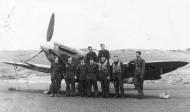
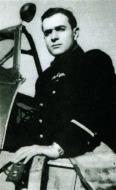
ObdL-WNr-1594-sd-by-RAF-602Sqn-at-nr-St-Abbs-Head-Berwickshire-22nd-Feb-1940-IWM-HU72686.jpg)


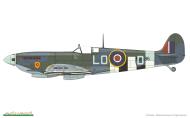
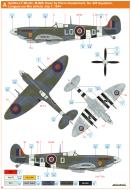



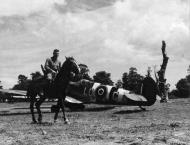


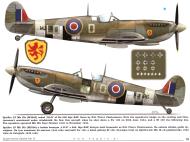
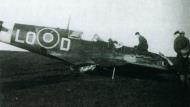



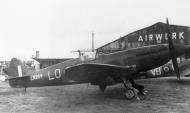

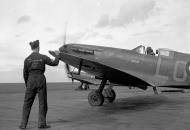

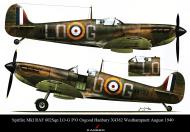
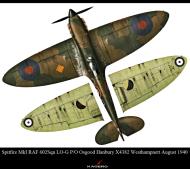
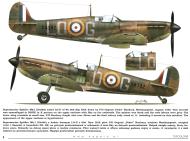
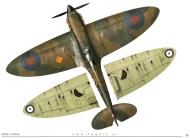

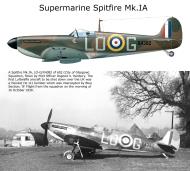

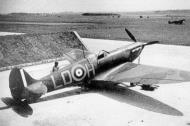
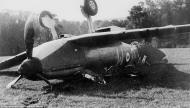


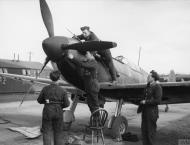
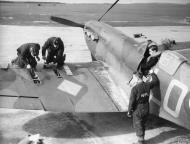

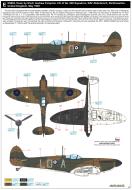

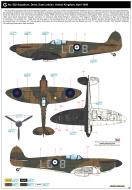
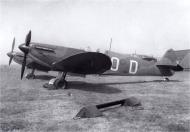

-KL-Charney-at-B11-Longues-Normandy-IWM-CL552.jpg)
